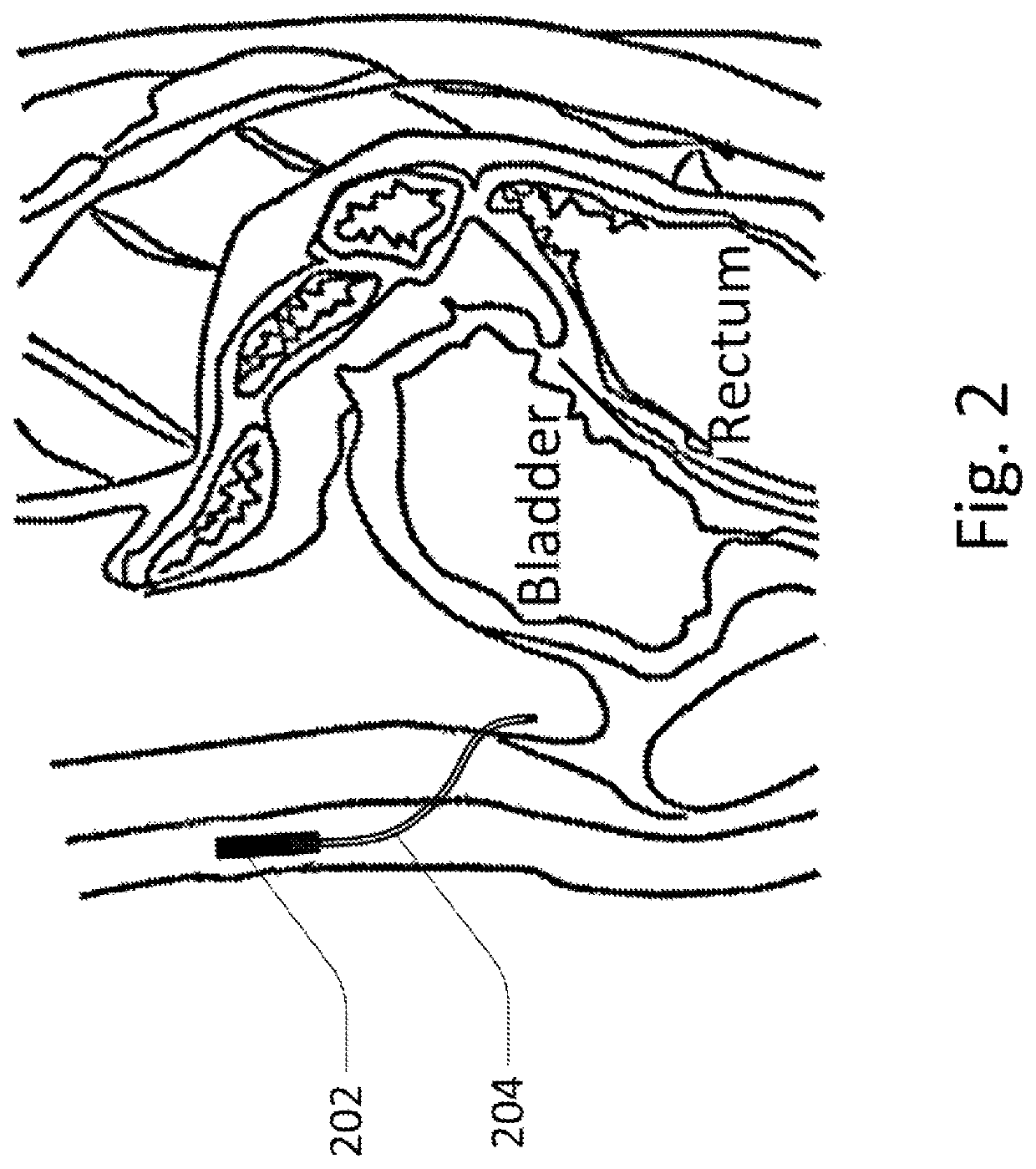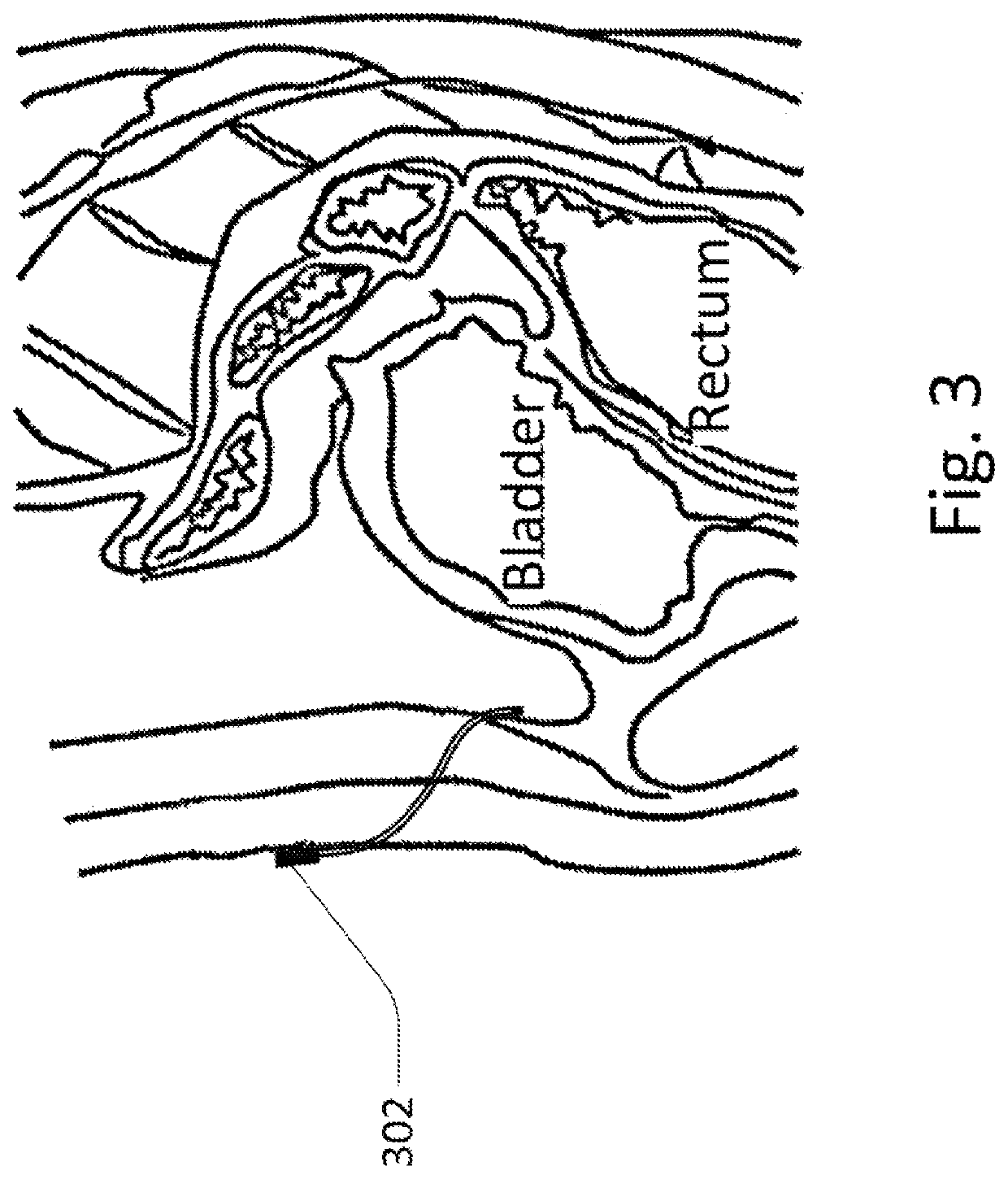Methods and devices for analyte sensing in potential spaces
a potential space and analyte technology, applied in the field of continuous biochemical monitoring systems, can solve the problems of reducing the immune response of the device, unable to communicate with the device from outside the body, and insufficient closed loop system, etc., to achieve faster glucose sensing kinetics, faster insulin delivery, and the effect of reducing the risk of infection
- Summary
- Abstract
- Description
- Claims
- Application Information
AI Technical Summary
Benefits of technology
Problems solved by technology
Method used
Image
Examples
Embodiment Construction
[0043]The peritoneal sensor system generally includes a sensor ‘sampler’ portion, which is implanted in the peritoneal space, and a control portion / controller, which may be implanted elsewhere, such as subcutaneously, or may be external to the patient. Other functions which may be included include insulin delivery, sensor flushing, wireless communication, light spectroscopy, UV sterilization, analyte sampling, analyte circulation, logic, etc.
[0044]FIG. 1 shows an embodiment of the peritoneal sensor system with a tether / catheter which includes wireless communication. The embodiment of the peritoneal sensor system shown here includes catheter / tether 102 including subcutaneous antenna 104 on one end, and sensor portion 106 on the other end. For example, the sensor may sense the presence of glucose. This allows the sensor portion to communicate with external transmitting controller 108 where the sensor portion has low power requirements despite its position deep within the body. This de...
PUM
 Login to View More
Login to View More Abstract
Description
Claims
Application Information
 Login to View More
Login to View More - R&D
- Intellectual Property
- Life Sciences
- Materials
- Tech Scout
- Unparalleled Data Quality
- Higher Quality Content
- 60% Fewer Hallucinations
Browse by: Latest US Patents, China's latest patents, Technical Efficacy Thesaurus, Application Domain, Technology Topic, Popular Technical Reports.
© 2025 PatSnap. All rights reserved.Legal|Privacy policy|Modern Slavery Act Transparency Statement|Sitemap|About US| Contact US: help@patsnap.com



